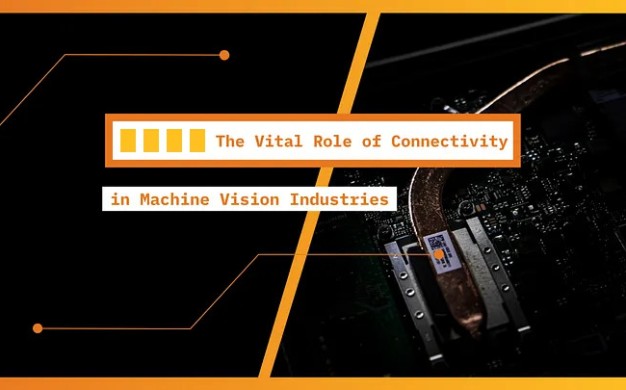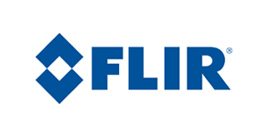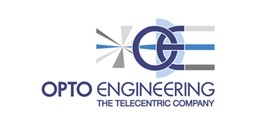Listen to this Article
Machine vision technology has been a revolutionary force in transforming the way we perceive and interact with the world. Its applications span across diverse industries, from revolutionizing manufacturing processes to enhancing medical diagnostics. At the heart of this cutting-edge field lies the remarkable capability of machines to not only capture visual data but also interpret it. This pivotal role has made machine vision an indispensable component in the realms of automation and quality control across various sectors.
In this comprehensive exploration, we delve into the critical role that connectivity plays in augmenting the effectiveness and efficiency of machine vision systems. By understanding the various components of connectivity in the machine vision industry and their ultimate importance, we gain insight into the transformative power of this technology.
Machine Vision Connectivity Components
To comprehend the significance of connectivity in machine vision, it's essential to first dissect the core components involved in the process. These components are the building blocks that enable machine vision systems to function seamlessly and efficiently.
- Cameras and Sensors:
At the epicenter of machine vision are cameras and sensors, which serve as the eyes of the system, capturing images and data. These devices are responsible for acquiring the visual information essential for machine vision applications. The connectivity of cameras and sensors is crucial for facilitating data transfer and system control. In modern machine vision, cameras often feature various interfaces such as GigE Vision, USB, or CoaXPress, which ensure the smooth transmission of data. - Frame Grabbers:
Frame grabbers serve as intermediaries between cameras and computers. Their primary function is to capture data from cameras and make it available for processing. These devices come equipped with diverse interfaces to accommodate different camera types and are essential for ensuring data continuity and integrity. - Cabling and Interfaces:
High-quality cables and interfaces are vital for transferring data between machine vision system components without interference or loss. The choice of cables and interfaces should be carefully considered to meet the specific requirements of the machine vision system, ensuring that data flows seamlessly and without degradation. - Networking and Communication:
Connectivity within the machine vision environment extends to networking and communication between various components and even between different machines. Ethernet connections are commonly used to link multiple devices and facilitate data exchange, enabling coordinated efforts among different parts of the system. - Software and Processing Units:
Software is a critical component of machine vision, as it plays a pivotal role in interpreting visual data and making decisions based on that data. Machine vision software must be compatible with all hardware components and should facilitate seamless communication. In addition, processing units, whether located on-site or in the cloud, are essential for data analysis and decision-making. - Industrial Protocols:
In an industrial setting, machine vision systems often need to interact with other machinery and control systems. Implementing standard industrial communication protocols, such as OPC-UA or MQTT, ensures interoperability and connectivity with the broader industrial ecosystem. This allows machine vision to be seamlessly integrated into larger industrial processes.
The Importance of Connectivity in Machine Vision
Connectivity in the realm of machine vision is not a mere convenience; it is a fundamental requirement. Its significance is highlighted by the following key factors:
- Real-time Decision Making:
In industries where speed and precision are of paramount importance, such as manufacturing, connectivity is the linchpin that enables machine vision systems to make real-time decisions. This capability is crucial in delivering quality control, defect detection, and automation, ensuring that products meet rigorous standards consistently. - Remote Monitoring and Control:
Connectivity facilitates remote monitoring of machine vision systems, a capability that proves especially useful in quality control within distributed manufacturing plants. It also aids in diagnosing issues without the need for physical presence, saving time and resources. - Data Sharing and Integration:
Machine vision systems generate vast amounts of data. Connectivity is the conduit that allows for the sharing of this data with other systems, thereby enabling better decision-making across the organization. Integration with enterprise resource planning (ERP) systems and other databases becomes possible, creating a more streamlined and efficient workflow. - Scalability:
As the needs of the industry change and evolve, machine vision systems must be equally adaptable. Connectivity is the key that makes it easier to add or upgrade components without disrupting any existing system. This ensures that machine vision systems can grow and change in tandem with the industry they serve. - Reduced Downtime:
Effective connectivity can often lead to proactive maintenance. By monitoring the status of cameras, sensors, and other components in real-time, issues can be identified proactively and resolved before they cause significant downtime. This not only saves time but also ensures continuous, reliable operations. - Quality and Consistency:
Connectivity is the linchpin that ensures machine vision systems maintain consistency in quality control and inspection processes. This is particularly crucial in industries such as pharmaceuticals, automotive manufacturing, and food production, where precision and adherence to stringent quality standards are non-negotiable.
Conclusion
In summary, connectivity is an indispensable enabler of the machine vision industry. The ability of machines to see and interpret visual data is entirely contingent on reliable and seamless connections between components. As technological advancements in connectivity continue to emerge, they will undoubtedly play a significant role in the evolution and growth of the machine vision industry, driving efficiency, accuracy, and innovation across various sectors.
As industries continue to embrace automation and data-driven decision-making, connectivity in machine vision will remain at the forefront of these exciting and transformative changes. By recognizing its pivotal role and investing in cutting-edge connectivity solutions, organizations can position themselves at the vanguard of this dynamic and ever-evolving field.
Also Read: AI DECISION-SUPPORT IN MANUFACTURING: ENHANCING QUALITY AND EFFICIENCY
Back to All Robotics and Autonomous Systems Articles, Resources and News































